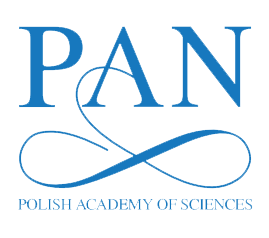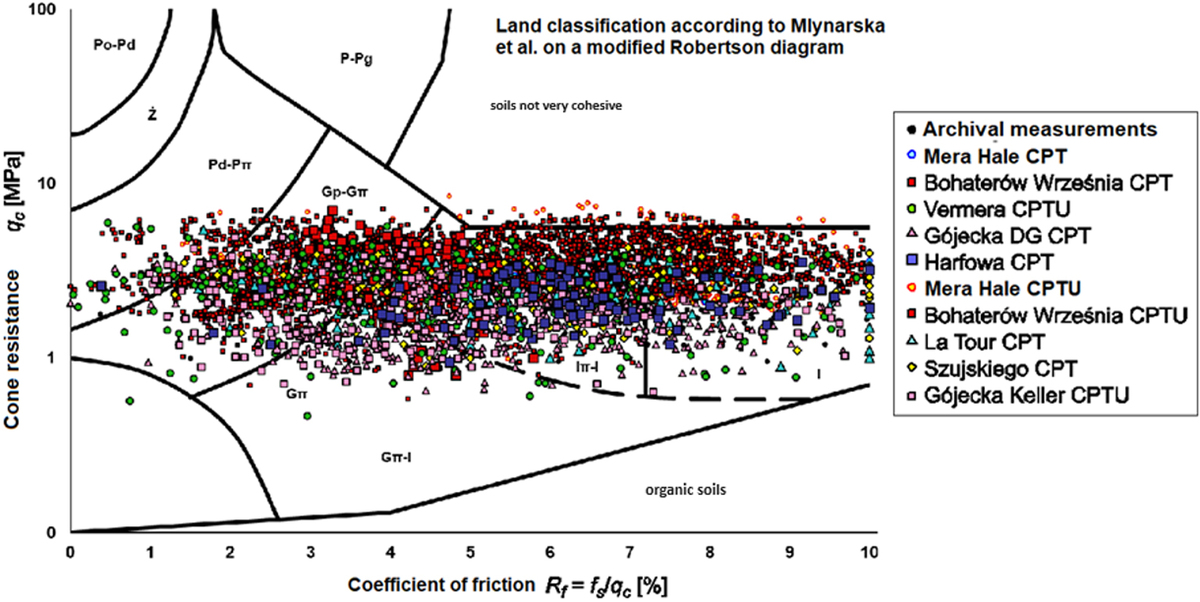Model studies and quantitative evaluation of the reduction of gyttja consolidation settlement by different types of piled raft foundations
1
Faculty of Civil Engineering, Warsaw University of Technology, Poland
Submission date: 2023-10-31
Final revision date: 2024-02-28
Acceptance date: 2024-04-09
Publication date: 2025-06-16
Corresponding author
Mateusz Cezariusz Frydrych
Faculty of Civil Engineering, Warsaw University of Technology, Armii Ludowej 16, 00-637, Warsaw, Poland
Faculty of Civil Engineering, Warsaw University of Technology, Armii Ludowej 16, 00-637, Warsaw, Poland
Archives of Civil Engineering 2025;71(2):503-519
KEYWORDS
settlementcoefficient of consolidationCombined Pile-Raft Foundationconsolidation of gyttjasoil compressibilitysettlement reduction
TOPICS
ABSTRACT
Combined Pile-Raft Foundations (CPRF) are widely employed to mitigate vertical settlement in building and engineering structures, particularly when allowable settlements may be exceeded under ultimate limit state conditions. For structures resting on cohesive and organic soils, understanding the time required for complete stabilization of settlement is crucial. Total settlement involves instantaneous settlement (elastic ground deformation), consolidation settlement (water squeezing from pore space), and secondary settlement (structural changes in the ground skeleton, known as secondary consolidation or soil creep). Urban expansion, notably in cities like Warsaw, compels developers to construct in previously overlooked areas, potentially containing organic carbonate sediments like gyttja and chalk. Buildings on such organic soils often settle due to gyttja consolidation during construction and operation. Analyzing long-term settlement, especially of CPRF on reconsolidated organic soils, becomes paramount. Model tests on a laboratory scale offer a cost-effective alternative to large-scale tests, providing quantitative insights into CPRF settlement reduction through piles. This study presents results from model tests conducted on real organic soils, enabling the prediction of CPRF settlement solely based on gyttja's geotechnical parameters. Considering the highly deformable ground medium, both the CPRF slab and piles are situated in organic soils. The research aids in analyzing consolidation settlement parameters and offers guidelines for optimal design in investment project foundations. These findings are instrumental in ensuring the stability and longevity of structures in challenging soil conditions.
Share
RELATED ARTICLE
We process personal data collected when visiting the website. The function of obtaining information about users and their behavior is carried out by voluntarily entered information in forms and saving cookies in end devices. Data, including cookies, are used to provide services, improve the user experience and to analyze the traffic in accordance with the Privacy policy. Data are also collected and processed by Google Analytics tool (more).
You can change cookies settings in your browser. Restricted use of cookies in the browser configuration may affect some functionalities of the website.
You can change cookies settings in your browser. Restricted use of cookies in the browser configuration may affect some functionalities of the website.




